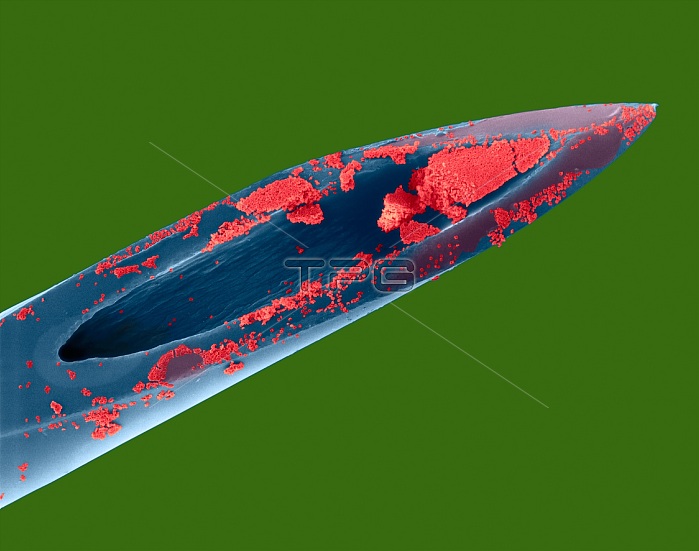
Hypodermic needle (26 gauge) and human blood, coloured scanning electron micrograph (SEM). Red blood cells (RBCs), or erythrocytes, are the most common type of blood cell in vertebrates. They are involved in delivering oxygen to the body tissue. RBCs take up oxygen in the lungs or gills and release it into tissues while squeezing through the body's capillaries. The cytoplasm of RBCs is rich in haemoglobin, an iron-containing biomolecule that can bind oxygen and is responsible for the red colour of the cells. The cell membrane is composed of proteins and lipids and this structure provides properties essential for physiological cell function (deformability and stability) while traversing the circulatory system, especially the capillary network. In humans, mature RBCs are flexible and oval biconcave disks. RBCs are the most abundant type of cell in human blood, accounting for 40% of the blood volume. Magnification: x16 when shortest axis printed at 25
| px | px | dpi | = | cm | x | cm | = | MB |
Details
Creative#:
TPG22479301
Source:
達志影像
Authorization Type:
RF
Release Information:
須由TPG 完整授權
Model Release:
N/A
Property Release:
N/A
Right to Privacy:
No
Same folder images:

 Loading
Loading